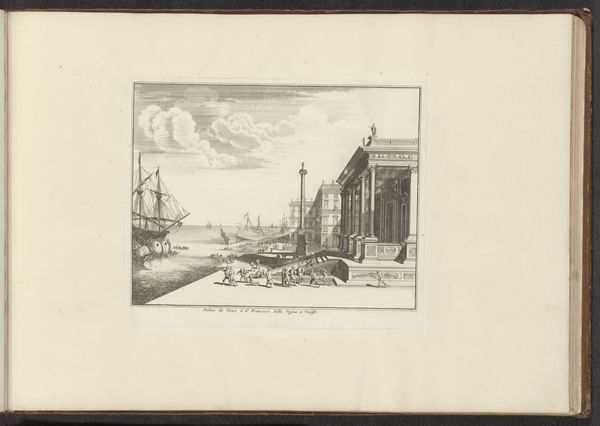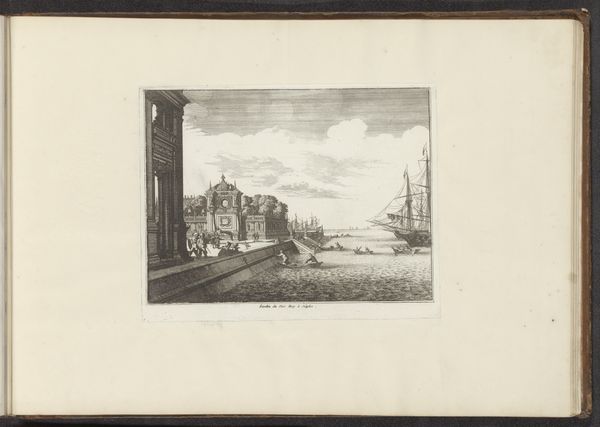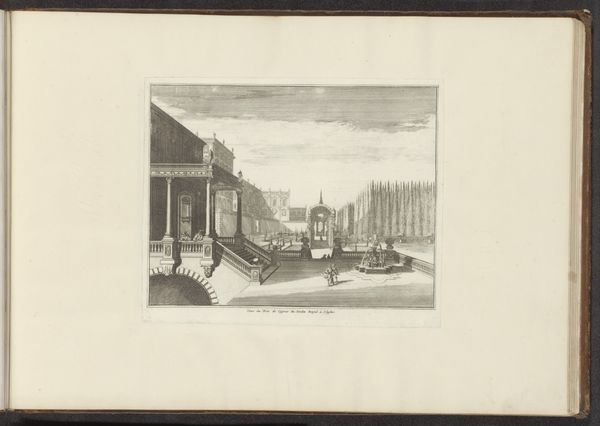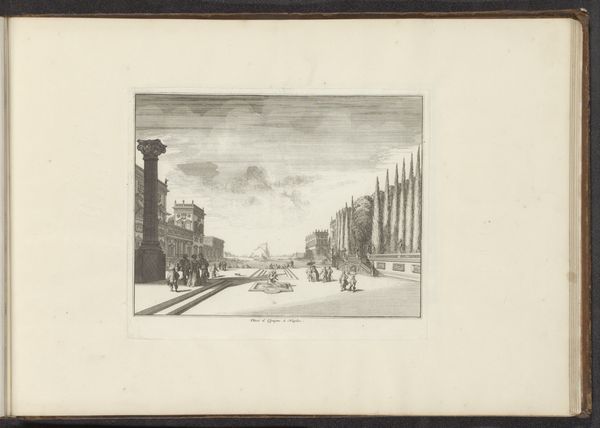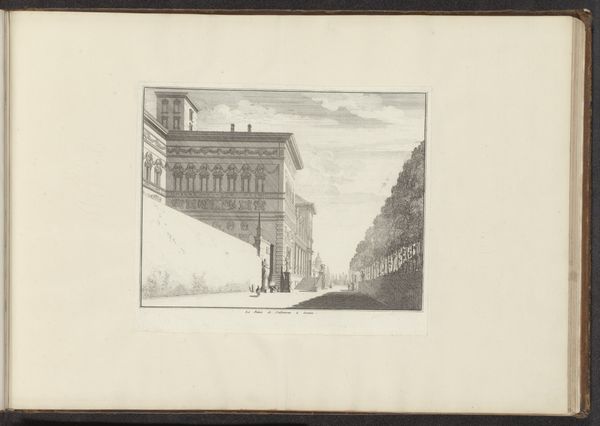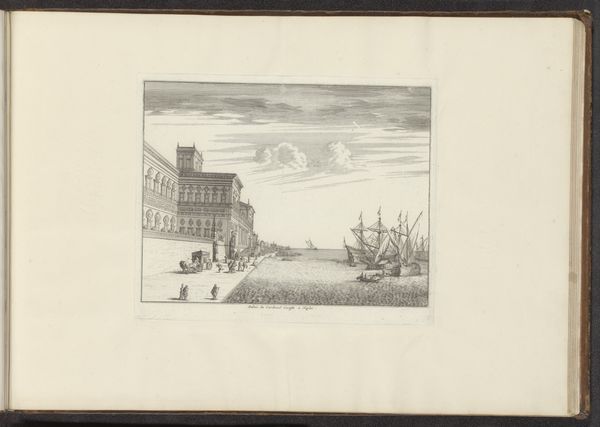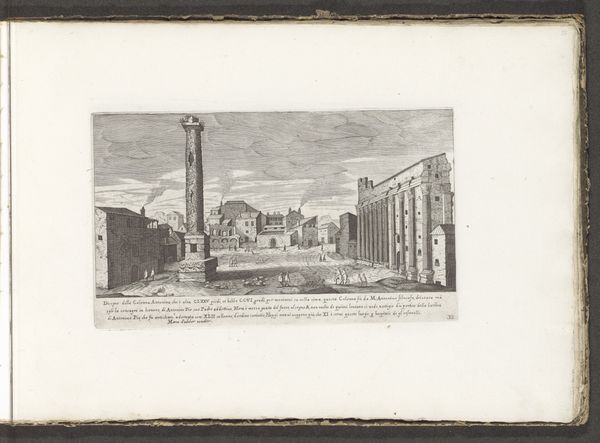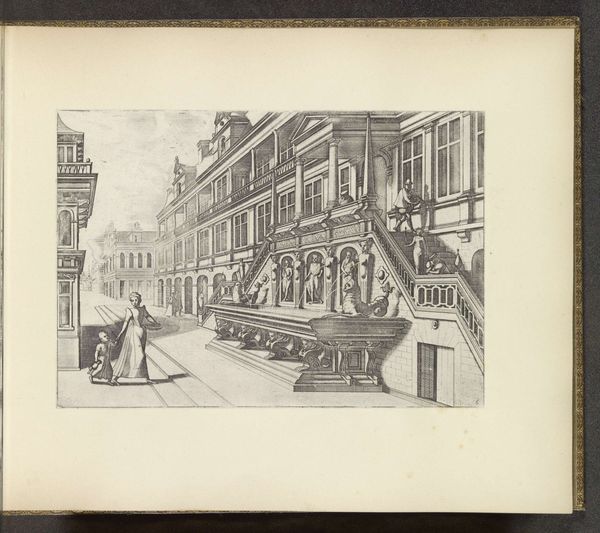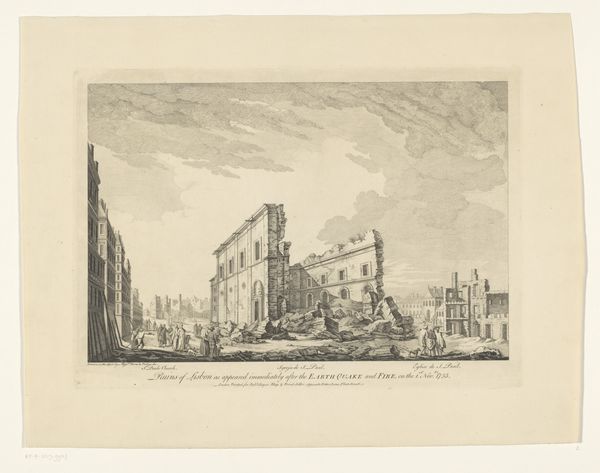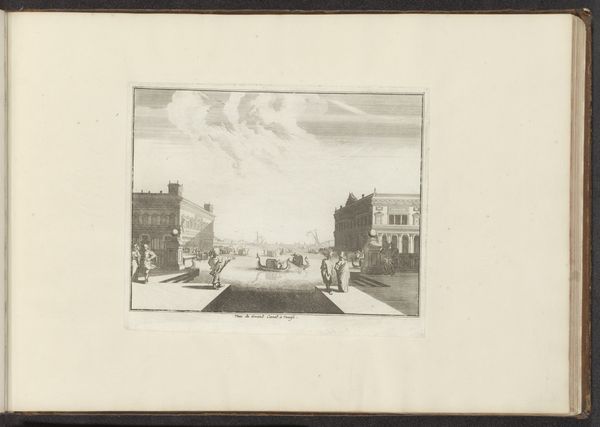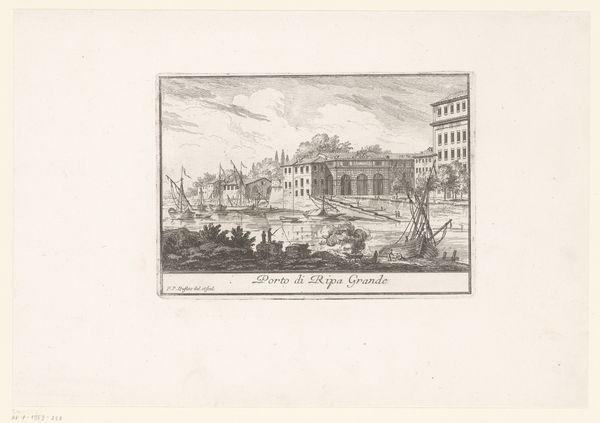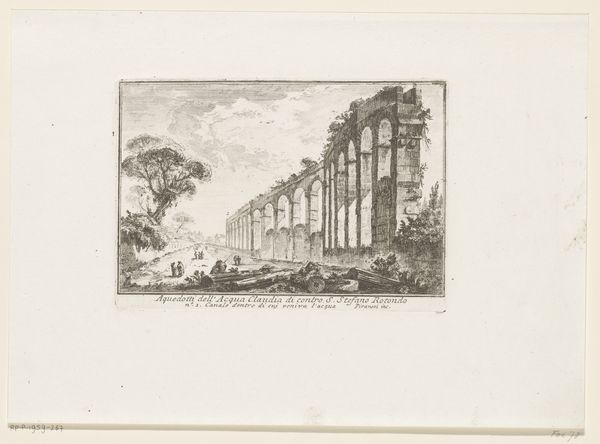
Gezicht op een kade in Venetië met de leeuw van San Marco op een zuil c. 1700 - 1710
0:00
0:00
anonymous
Rijksmuseum
print, engraving
#
venetian-painting
#
baroque
# print
#
landscape
#
cityscape
#
engraving
Dimensions: height 220 mm, width 268 mm
Copyright: Rijks Museum: Open Domain
Curator: Look at this anonymous engraving from around 1700-1710, entitled "View of a Quay in Venice with the Lion of San Marco on a Column". It’s a baroque cityscape housed here at the Rijksmuseum. Editor: The pale etching gives a sun-drenched feel, though subtly mournful. The almost ethereal quality of the architecture fading into the distant haze suggests a melancholic contemplation of time. Curator: Precisely. The lion of San Marco, prominently displayed, acts as a cultural keystone. The winged lion symbolizes Venice, also evoking Saint Mark himself and themes of power, justice, and the city's historical identity. We're seeing a deliberate play on Venetian self-image. Editor: I notice the class dynamics; well-dressed figures populate the quay, while the background implies working-class activities, reflecting the socio-economic stratification of Venetian society. The architecture reinforces the existing hierarchies of power, subtly underscoring inequality. Curator: I'm glad you noticed the people along the water's edge, who give life to the architecture and watercraft nearby. They are like minor deities, mediating the space in between symbolic structures and commercial infrastructure. Editor: To that point, the shadows become visually weighty elements. The buildings’ extended shadows almost crush the life moving along the waterfront; these bold lines subtly create tension between light and shadow, freedom and constraint. Curator: True. These recurring motifs build narratives through careful symbolic arrangement. It reveals, not just depicts, a world through allegory and familiar, time-tested devices. Editor: Which also makes it important to examine who *isn’t* represented; which communities and experiences have been written out to ensure this pristine reflection of Venetian power remains untainted. Curator: It's a visual paradox, isn't it? We see Venice presented as eternal, powerful and grand; we see shadows that undermine this impression of stability. The engraving suggests to me an enduring tension between reality and image. Editor: Agreed. I’m leaving with the feeling that we’re looking at a carefully constructed statement. I feel that Venice needed the image just as much as it valued its place in the world.
Comments
No comments
Be the first to comment and join the conversation on the ultimate creative platform.
